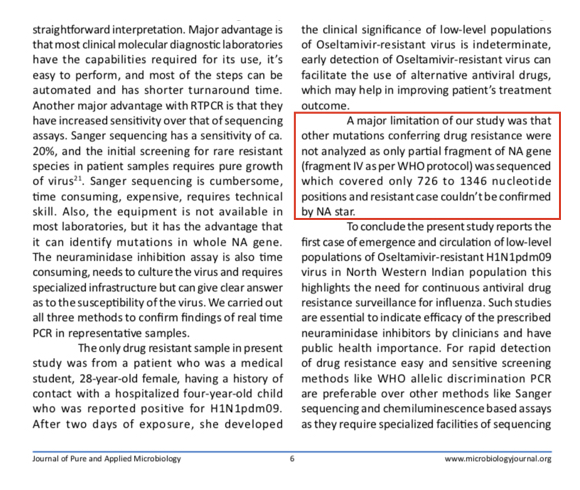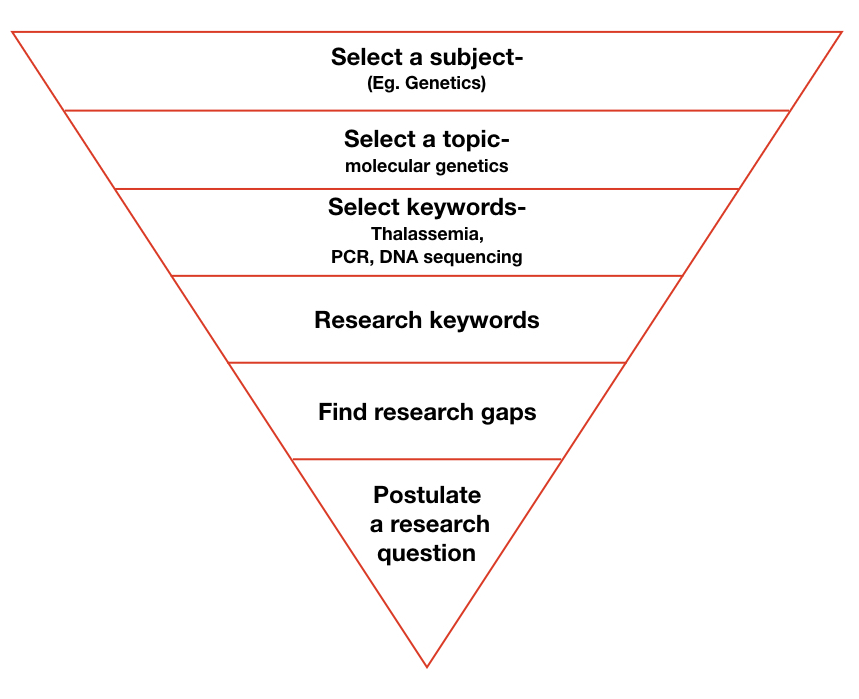“Choosing a topic, research or subject that has not been answered or explored yet by any other scientists is referred to as a research gap.”
Unfortunately, it’s difficult to find one!
When you start reading literature, initially you may notice that nothing is left to study! That everyone feels, even me too when I was in my initial days of PhD. But when you get enough research experience, you can find gaps in research easily.
“Every research is incomplete.”
Indeed, a research work completes when it states a gap or unexplored area with the final conclusion, so that future research will get direction.
The process of research or doctorate starts (immediately after you get admission) by initiating searching a research gap which leads to postulating a research question.
A research question is your title or statement of thesis using which you will find your thesis objectives and address a particular question. It can be stated only by finding a research or literature gap.
And as I said, it’s quite difficult for PhD students.
So in this blog post, I will explain to you what a research or literature gap is and how you can identify it.
Read more
What is a research or literature gap?
Firstly, a research/ knowledge gap or literature gap is though different terms but has a similar meaning. The reason is that a research problem can be addressed either by experimental research and literature review.
Definition:
A research or literature gap is a problem or unexplored/ underexplored area of the existing research.
Or
Choosing a topic, research or subject that has not been answered or explored yet by any other scientist is referred to as a research gap.
Let us start with an example;
Take a look at the hypothetical closing sentence.
“3 common mutations IVS1-5, IVS1-1 and CD8/9 have been selected for the present to screen thalassemia patients. A common mutation IVS1-5 has been identified in 2 out of 70 unrelated thalassemia patients using the conventional PCR technique.”
Let’s say you want to do research on the Genetics of Thalassemia. Suppose this one is the closing paragraph of some research article and is a final conclusion. How can you find a research gap here?
I find many gaps, Let us find out some of them;
- The sample size is too small.
- There are 12 common mutations in beta-thalassemia which are present in almost 80% of cases. Only three are selected in the present study.
- The present study is geologically restricted.
- The author has used a single conventional PCR technique. More techniques like DNA sequencing can be used to address the same problem, which possibly provides more knowledge and can identify novel mutations as well.
- The author hasn’t clarified which type of thalassemia patients they have included in the present study.
These are some of the possible gaps in the present research. Let’s look at other closing statements for the same.
“3 common mutations IVS1-5, IVS1-1 and CD8/9 have been selected for the present to screen thalassemia patients. A common mutation IVS1-5 has been identified in 2 out of 70 unrelated thalassemia patients using the conventional PCR technique. The present study can be strengthened by increasing sample size, diversifying geological studies, increasing the number of common mutations and using other techniques for thalassemia.”
Or
“Major limitations of the present study are small sample size, number of mutations and technique selected for the study.
All these closing statements posit the same type of research gaps. You can use these to prepare your thesis statement. Take a look at the one.
“Identifying common Beta-thalassemia mutations by DNA sequencing from south India.”

Where to find a literature gap?
Some research clearly indicates gaps in their studies whereas some don’t. And that’s why it’s difficult for students to discover one. Notedly, by looking into variables used in the study, gaps can be recognized.
- Samples- size, types, collection method, transportation conditions.
- Research technique- single, two or multiple; significance, efficiency and accuracy of the techniques used.
- Geological location and condition of the study conducted.
- Objectives selected for the study.
- Data obtained and research discussions.
You have to read tons of literature to actually determine possible gaps in the research. A research gap has been indicated in the conclusion section, final interpretation, future direction or suggestions part of a research paper.
Besides, when you came across some phrases used in the literature such as,
The present study has not been covered…..
………… excluded from the present study.
………… is important to address in future research.
…………. Techniques can be fruitful for future research.
……………. have/has not been studied/ reported/ evaluated in the present study.
Keep in mind that this indicates a gap, problem or scopes of improvement in the study.
Read more: Which factors decide a PhD Salary?
How to find a research gap?
As I said, it’s not an easy process to find a problem or gap in the research, though by following some steps that I will mention here, you can find one and can go with it.
Select a topic that you like and that motivates you:
Research interest is important because you have to do the same work for at least 4 to 5 years. Research takes a tremendous amount of physical, mental, economical and intellectual effort. Meaning you have to select a topic that likely motivates you. You should not get tired of doing that!
Find lucrative keywords to go ahead:
You can’t go through the whole topic or subject, right! you have to select one or a few. Means, make things more narrow. Take a look at the process, I have explained with an example.

Find a keyword that is relevant to the topic you like or are interested in and go ahead with it.
Find relevant resources and literature:
Now next in the process, type your keyword or group of keywords in the Google search box and try identifying literature, reviews and research associated with it.
Find reviews, read them and try to find gaps in studies. Keep in mind that it will remain in your interest circle.
Read peer-reviewed articles and find gaps in the research:
Try to read every fresh research and review article around your topic, go through the technique and sample collection process used in each research and discover discordance or space there.
You can make a comparative analysis table as well. Take a look at the table below,
| Research study | Title and year of publication | Techniques, methods and sample collection | Outcomes of the study | The geographical location of the study conducted | What is not covered in the study | Research scope |
When you make a comparative analysis of a few studies you will get an idea about the research gap, gap in sample collection, scope to use other techniques, improvisation or new research areas to include in the study.
Choosing one from many:
When you complete the process, you may find many unanswered questions or research gaps (if you have done things in this manner) and you get stuck with many, which to choose and which to leave.
For PhD, it’s important to weightage a research work accurately; not more, not less. An imbalance will create an unnecessary burden and create problems in the future.
Henceforth, prioritizing and narrowing down the research gap is crucial.
In this case, you can take your supervisor’s help. Postulate an amazing research question that would be suitable for PhD, as per your interest, under your budget and fulfill your supervisor’s need.
Expected outcomes:
This is confusing for you surely!
You may wonder by only identifying a gap and postulating a research question, how can we expect anything as outcomes?
Expected outcomes of the research have significant value and importance in the PhD, PhD research proposal and your final report. You or your guide has to explain the possible results of the study.
It’s mandatory and will give you direction for research. Expected outcomes can be considered as a path on which you will have to walk.
Take an example of the research question we just postulated, “Identifying common Beta-thalassemia mutations by DNA sequencing from south India.”
What will be the expected results?
- You will get some common mutations.
- You will probably get some new mutations or variations.
- Or you will get nothing, which means, no mutations in any samples.
In either case, you have definite outcomes, and your final results will be around it, perhaps. You will definitely not get any information regarding the globin protein because that’s not included in the study.
Right!
You are just doing mutational analysis and want to find some common mutations in the selected population. So what research gap you will identify will surely give some expected outcomes.
Wrapping up:
Research gap/ knowledge gap or literature gap all terms leads us to the same direction and help us to propose a research question. Although as we said, expected outcomes are also an important consideration to fill the gap.
If you are new to PhD or just started this article is the best place for you to start, and will definitely assist you to find a mission piece of link in the research.
I hope you like this article. Please do visit other articles on this blog.




